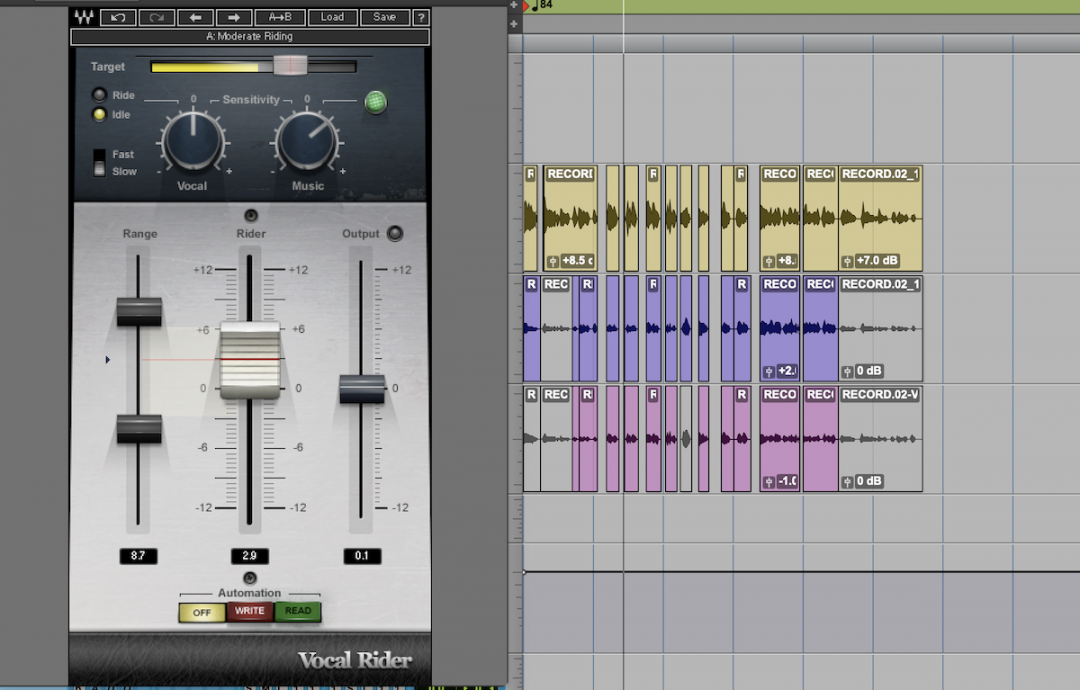
to a compressor results in remarkably smooth and present vocal recordings. Instead of manually riding the physical mixing console fader, or tediously drawing in each individual level change on a DAW track, Vocal Rider does it for you, making it a true timesaver. Simply put, Vocal Rider rides the levels of vocal tracks, automatically.
#WAVES VOCAL RIDER VS COMPRESSOR SERIES#
But a compressor doesn't care about what's a note or a phrase or musically meaningful element, it does its thing mechanically even if it makes the performance sound unnatural. The Waves Vocal Rider plug-in mimics someone moving fader moving gently up. Vocal Rider is the first of Waves pioneering new series of Mix tools. A rider can listen to notes or phrases and keep track of which part of the signal constitutes a note or other similar musical entity, and not change the gain inside such an entity, only between them.Compressors don't take other instruments into account for raising a level (the make-up gain doesn't follow anything), but a rider might raise a solo instrument or lead vocal according to the general loudness level of the music, to keep the solo element in front all the time.When riding, you might reduce annoying weird or nasal sounds that you notice by understanding the signal such as vocals.Instead, compressors have a "do not exceed" threshold, an upper limit above which the signal is attenuated, and a make-up gain. Compressors don't have a target level - a constant level that you try to maintain by either adding or removing gain, when riding.(A gate or expander could do that.) But that can be an important goal in fader riding and automation - to remove unnecessary noise in places with no meaningful signal. Compressors don't silence out quiet parts.Someone might do it with volume automation though. I don't think you'd do this kind of mechanical thing by riding a fader. Or just to let the attack part of the drum to be heard by briefly making other things quieter when the drum hits. The vocal rider essentially automates the volume. A compressor can be configured to duck/attenuate with some other channel/instrument as its key/sidechain input, for example the kick drum can be used to duck everything else, creating a pumping sound. This little tool will save you hours on mix automation and compression down the line.


A compressor can be used as a de-esser by attenuating the signal when the sibilant frequencies raise above a threshold, but then the compressor is dedicated to only that purpose, not doing everything else at the same time as well. A compressor can be configured to mechanically react only to a certain limited frequency range in the input signal by filtering or EQing its key/sidechain input, but when riding you usually listen to the signal as a whole - possibly taking more abstract things into account such as excessively snappy or harsh "esses" i.e.With extremely fast operation, a compressor can even be said to change the sound's waveform, not only its "envelope".(actually, ANY kind of time-variant gain change is distortion, but proper fader riding should never sound like distortion) This sort of character-change is distortion. This is done particularly with drum sounds, for example to make them sound more punchy or snappy. The time window that a compressor takes into account is so short and its reactions are so rapid that it can change the attack part of a note significantly, making it sound like a different or differently played instrument. Compressors can and are used for shaping a sound's characteristics or timbre.What compressors do, but riding doesn't or shouldn't If I had tried the Waves Vocal Rider before Wave Rider, I would just assume it was. Both are used to even out volume changes (but not only that) WaveRider has become a valuable and creative tool that I use often.

Or it could be used after the fact, for that final bit of level tweaking.Let's compare gain/fader/wave riding (plugins or mixing engineers) and compressors It's handy to use in conjunction with compressor, to prep the signal for more smooth compression results.
#WAVES VOCAL RIDER VS COMPRESSOR MANUAL#
The end result is a very transparent form of level management, that is effectively like making manual gain rides yourself. The end result can also be written out in automation for further editing, you just can't do that with a conventional compressor-expander. It also has a lookahead value so that it can increase and decrease signals as transparently as possible. Vocal/Bass Rider is a bit more than a compressor as it also increases signal levels as well when they are too soft. What they were trying to invent was something more akin to Vocal Rider, what they got, was a compressor, however. However, in practice, the end result didn't sound as fluent and as transparent as they would like, but they were also limited by the technology at the time. Once upon a time, when they first invented the compressor, they were actually looking for a way to automatically ride volume levels to keep them consistent.


 0 kommentar(er)
0 kommentar(er)
